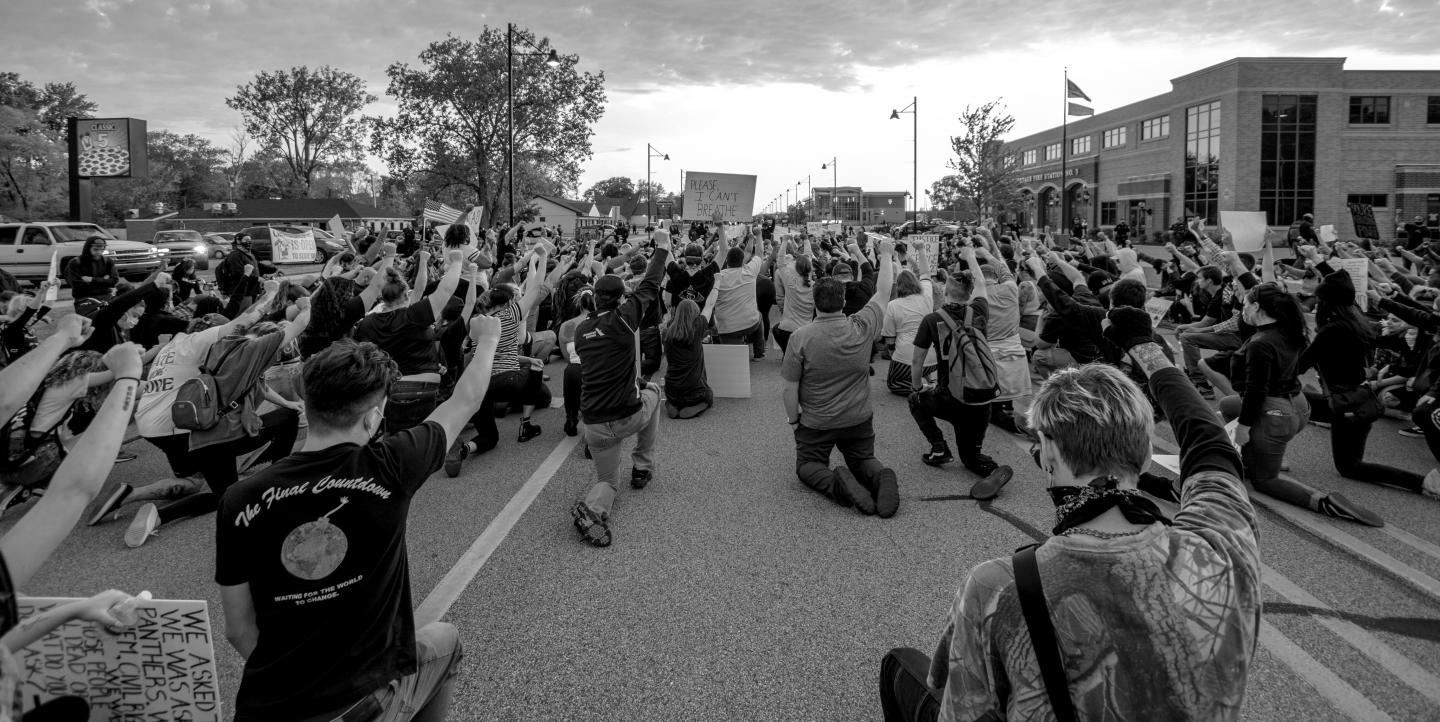There are two primary flows of Russian disinformation, according to Kristina Gildejeva, a disinformation researcher at Logically. “The first one targets a domestic audience, and the second one is for abroad,” she said.
The two flows are similar, but their aims diverge. They have been laid bare in Russian-backed news coverage of the Black Lives Matter protests.
Within Russia, the goal is to portray the country as a safe haven compared with the U.S. “Russian national media showed the Black Lives Matter protests as much more dramatic and brutal than any other media,” said Gildejeva. “For example, one of the main narratives was that the U.S. is on the edge of civil war.”
Another narrative pushed that the protests are the American equivalent to Euromaidan, a revolution that removed a pro-Russian president from power in Ukraine in 2013-14. “The BLM protests were pictured as an organized revolution, which will lead to a coup d'etat and even more chaos,” Gildejeva added.
At the same time, Kremlin-affiliated media downplay the police brutality, according to Russian civic activist Yury Nabutovski. “That’s mostly because the police in Russia [are] notorious for [their] violence toward the people.”
[Read more: Beyond fact-checking: fighting the onslaught of COVID-19 disinformation]
Unresolved racial issues within Russia contribute to a negative portrayal of the protests, said Nabutovski. Although Russia has a very small Black community, there exists significant prejudice toward non-white Russian citizens from the country’s Asian regions.
The messages exported abroad highlight similar problems, but with a different aim: show the West falling apart, with the U.S. as an example. In contrast, Russia is presented as a more peaceful, stable alternative.
“Pro-Russian media in Ukraine often demonized the protesters and emphasized the looting,” said Yaroslav Zubchenko, a journalist at Detector.Media, a Ukrainian media watchdog platform.
“[They] also called the events a “Black Maydan,” or a “Black Revolution,” he added, referring to the “Color revolutions” in Ukraine and Georgia that were widely condemned by Russian media, but which received large popular support in the countries they took place.
“Some [news] channels talked with the Russians and Ukrainians living in the U.S. and asked them how they defended their property and feared for their lives [due to looting],” said Zubchenko. Many media specifically exaggerated the comments from this community to make the protests look more dangerous. “This way, the platforms discredit the entire protest and ignore the problem of systematic racism across the U.S.”
[Read more: 5 ways Reverso shared their fact-checks during the Argentine election]
It’s not just pro-Russian platforms picking the narratives up. Well-known Ukrainian blogger Denys Kazansky, for example, compared the BLM protests to Russian separatists’ efforts in eastern Ukraine. “American disorder is reminiscent of the event of 2014 in Donbas. Not so much because of the looting, but due to their senselessness and ruthlessness,” wrote Kazansky.
Meanwhile, pro-Kremlin media outlets Russia Today (RT) and Sputnik, both of which run English-language websites, have shared videos of attacks on businesses in the U.S. for their international audiences.
“The coverage targeting the audiences abroad is either directly supporting Trump or merely tries to divide democrats,” said Gildejeva. “The aim of the message is political.”
The disinformation includes conspiracy theories, too. “We see a rise of conspiracy theories that it was the Democrats who organized it all,” said Zubchenko. These theories provide audiences in Ukraine an image of radicals gaining control of the U.S. government, and of protesters overrunning the country.
The conspiracy theories seek to fuel the already existing paranoia in the U.S., according to Gildejeva. “There are several claims that the so-called “deep state” organized the protests, or that the protests were organized to support forced vaccination of the Americans,” she explained. “Basically, the technique is to bring all topical and painful issues together and push it to the U.S. audience.”
The narratives have gained traction with an American audience. Mainstream conservative news outlets in the U.S. have picked these stories up and circulated them. Fox News reported on marauders and conspiracies behind BLM, for one. Conservative international affairs outlet The National Interest ran stories on the damage to Confederate monuments and rage among BLM protesters.
As Russian-backed narratives find a foothold outside Russian-speaking media, it’s important news consumers take appropriate actions. Run basic checks to verify viral posts, videos and photos taken out of context. Double-check the profiles of experts commenting on BLM across different media.
These narratives typically seek to manipulate emotional, negative reactions. Taking simple steps like the above can help mitigate their harm.
Anna Romandash is an award-winning reporter from Ukraine. She works as a foreign correspondent.
Main image CC-licensed by Unsplash via Cooper Baumgartner.


